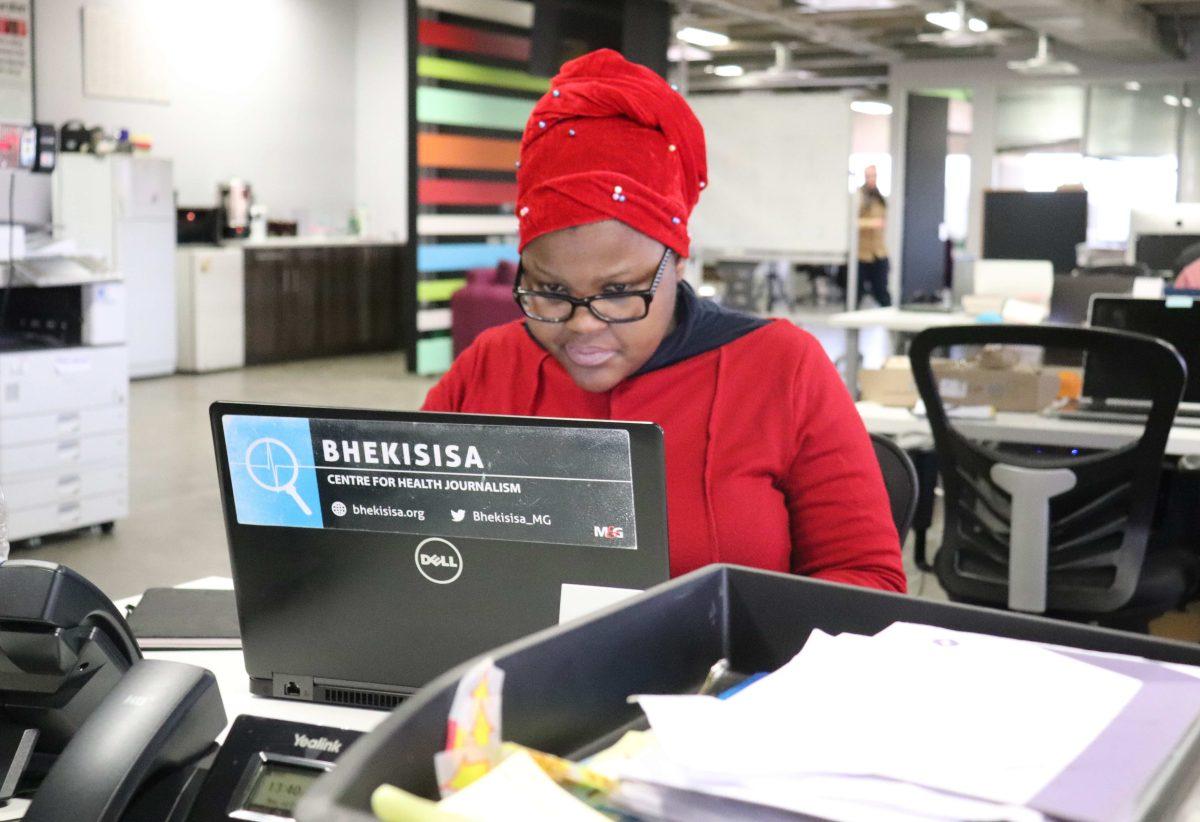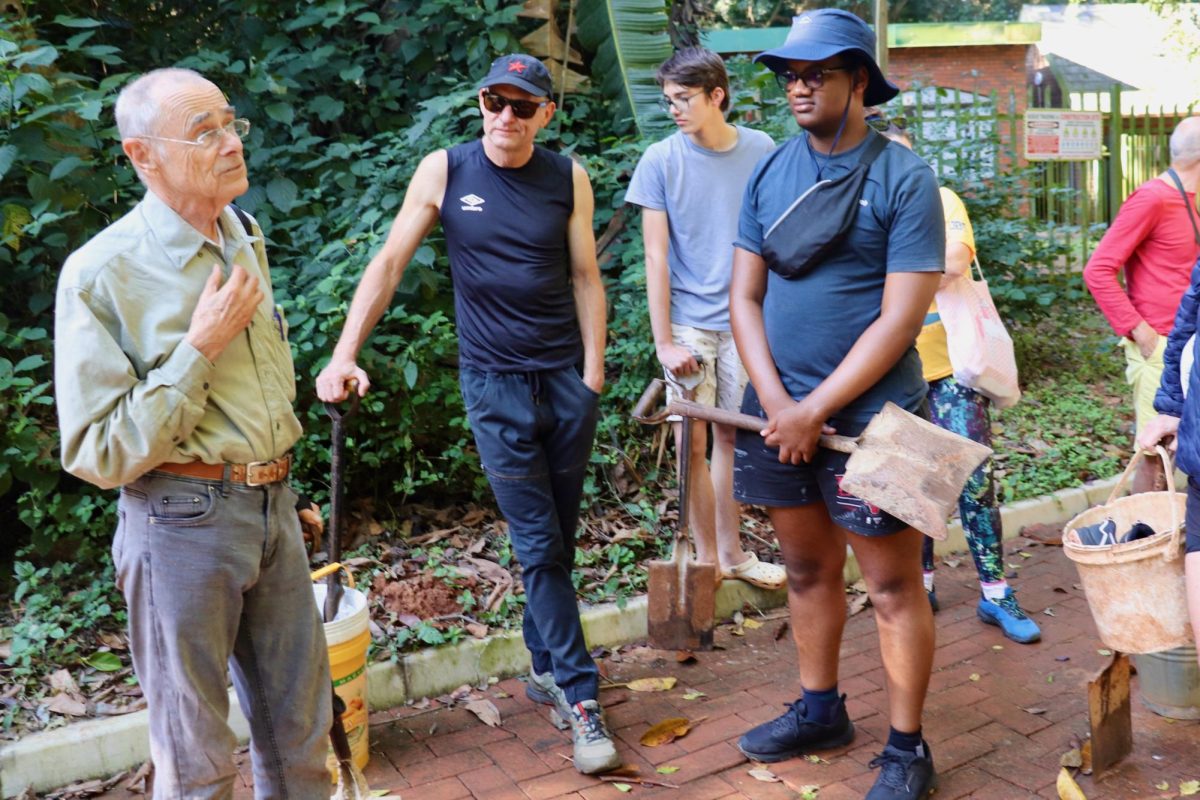When Nelisiwe Msomi, then a university intern, joined the staff of The Bhekisisa Centre for Health Journalism in Johannesburg in 2016, she knew the state of healthcare in South Africa was bad, but she had no idea to what extent.
“Once I joined Bhekisisa, I really got to see how bad it is,” said Msomi, who graduated from the University of Johannesburg in 2016 and is now a full-time health reporter for the news organization. “You have people calling you, telling you, this is what I am going through, can you come and report on this? It really opened my eyes to the work that needed to be done.”
The Bhekisisa Centre for Health Journalism is a donor-funded South African health news organization launched in 2013 by journalist and editor Mia Malan. In addition to working as a reporter for the South African Broadcasting Corporation, Malan had years of experience reporting on health and education in rural parts of the Eastern Cape and saw the need for such an outlet.

Bhekisisa is an isiZulu word that means “to scrutinise.” A patient seeking healthcare might ask a medical professional to “bhekisisa” or scrutinize them. Malan, who currently serves as Bhekisisa’s editor-in-chief and executive director, said reporting on health issues in South Africa sheds light on inequalities within the country.
“If you approach [health coverage] in a developing country from a medical perspective, you won’t get very far,” Malan said. “You have to look at all the social determinants that influence health. Health is something that is almost like a mirror of society. It tells us about the history of our country.”
Bhekisisa approaches healthcare news coverage as a social justice issue that goes beyond medical reporting, according to Malan. It recognizes that people’s health is shaped by the places they live in, how much they earn, their gender, sexuality and status in society.
“I would like Bhekisisa to use health as an example to report on social justice, as opposed to reporting on health and just looking at one aspect of it,” Malan said.
This means Bhekisisa’s approach to reporting integrates storytelling with science and research.
“Bhekisisa’s main targets are policy makers,” Msomi said. “We use peer-reviewed research to back up what we are saying. What we are trying to do is influence them into making the right decisions so we can have a better health system.”
For example, Msomi wrote a story about the government’s promise to fund the country’s one-stop centers for victims of abuse, investigating whether provincial health authorities could adequately provide assistance with the limited resources at their disposal. The story provided statistics on sexual violence and HIV as well as information about how the centers implement government funding policies.
Bhekisisa follows a solutions journalism approach to its stories, using character-driven narratives and focusing on an in-depth response to a problem and details about how that response works, according to Malan.
Joan van Dyk, a health reporter for Bhekisisa, said using a solutions feature is effective in engaging the reader with issues discussed in the article.
In early July van Dyk wrote a solutions feature about children living and dying with terminal cancer. She introduced her readers to the topic through the personal narratives of parents of terminally ill children, and then weaved in statistical information about issues concerning palliative care in South Africa.

“It is always easier to link an issue in your mind to a certain character or someone like you identify with on a page,” Dyk said. “Solutions features also use a narrative feature where you are burying the boring policy and try really driving home how this affects them.”
Malan said solution journalism is especially powerful in South Africa because it is an environment that has a need for increased social justice.
“Where are you going to find a better environment to promote social justice? It is such an unjust society,” Malan said. “You don’t have to look very far for things to report on.”
This approach pushes reporters to rethink their own positions, Msomi said, noting that, as a Muslim woman, she was forced to assess her own beliefs when reporting on the rights of sex workers.
“In an ideal Muslim world, I wouldn’t have been taught to advocate for that,” Msomi said. “Here I understand the science behind why sex work should be decriminalized.”
Van Dyk said her health reporting for Bhekisisa also affects the way she thinks about the politics and economics of healthcare.
“Who gets healthcare, who is allowed to get healthcare, who gets the bigger cut of the HIV funding pie?” van Dyk said. “Everyone gets ill, so seeing how these systems are failing and how people are dying because of corruption, it is not nearly as soft a beat as people think.”
Roxy de Villiers, social media content producer and engagement officer, said social media is required in order for Bhekisisa to further its unique solution journalism to a wider audience and supply the public with needed information.
For example, Bhekisisa created a map of safe abortion facilities around South Africa as a resource for the public. Villers said social media was essential in making the map accessible to women.
“We want to take things that are behind paywalls and make it easy to read and access,” De Villers said. “We understand we have some type of influence towards helping people on the ground that need our help [and] actually get it through us.”
Msomi said her work at Bhekisisa has proven journalism has an “excellent heart” that empowers journalists to create change concerning social issues they are passionate about.
“It is not just a story, it matters to people, people on the ground are heard and they feel like their stories matter,” Msomi said. “That is what makes it all worth it.”















































